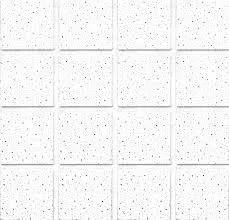Nov . 11, 2024 14:56 Back to list
mineral wool board ceiling
The Benefits of Mineral Wool Board Ceilings
In modern construction and interior design, the materials used to create a functional and aesthetically pleasing environment are of paramount importance. Among the various options available, mineral wool board ceilings have gained significant popularity due to their unique properties and advantages. This article explores the benefits of mineral wool board ceilings, making a case for their use in residential and commercial spaces.
What is Mineral Wool?
Mineral wool, also known as rock wool or stone wool, is a versatile insulation material made from natural stone and recycled slag. The fibers are created through a process of heating the raw materials to high temperatures and then spinning them into a fibrous structure. This process results in a product that is not only lightweight and easy to handle but also possesses excellent insulation properties. Mineral wool is non-combustible, sound absorbent, and resistant to moisture, making it an ideal choice for ceiling applications.
Acoustic Performance
One of the standout features of mineral wool board ceilings is their superior acoustic performance. The fibrous structure of mineral wool effectively absorbs sound, reducing noise levels in a space. This quality makes mineral wool board ceilings particularly suitable for environments where sound control is essential, such as offices, schools, and healthcare facilities. By minimizing echo and background noise, these ceilings can contribute to a more productive and comfortable atmosphere.
Thermal Insulation
In addition to sound absorption, mineral wool board ceilings offer impressive thermal insulation properties. They help maintain stable indoor temperatures by minimizing heat loss in the winter and keeping spaces cooler in the summer. This thermal resistance can lead to significant energy savings, as buildings equipped with mineral wool insulation often require less heating and cooling. As energy efficiency becomes increasingly important in construction, the use of mineral wool in ceilings plays a crucial role in building sustainable and eco-friendly structures.
mineral wool board ceiling

Fire Resistance
Safety is a top priority in any building design, and mineral wool board ceilings excel in this regard due to their fire-resistant properties. The material is non-combustible, meaning it does not ignite easily and can withstand high temperatures. This characteristic can help slow the spread of fire and provide occupants with additional time to evacuate in case of an emergency. Consequently, many building codes and regulations favor the use of fire-resistant materials, making mineral wool a compliant and responsible choice.
Moisture Resistance
Moisture control is another essential aspect of building design, particularly in areas prone to humidity or water ingress. Mineral wool board ceilings are highly resistant to moisture, preventing mold and mildew growth—common issues that may arise with other ceiling materials. This resistance not only contributes to a healthier indoor environment but also extends the lifespan of the ceiling system, reducing maintenance costs over time.
Easy Installation and Versatility
Mineral wool board ceilings are known for their ease of installation. The lightweight nature of the boards allows for straightforward handling and fitting, making them a popular choice among contractors and builders. Additionally, they can be easily cut to fit any space and are available in various styles, textures, and finishes, allowing for creative and versatile design options that cater to different aesthetic preferences.
Conclusion
In summary, mineral wool board ceilings represent an excellent choice for both new constructions and remodeling projects. Their numerous benefits—such as superior acoustic performance, thermal insulation, fire resistance, moisture control, and ease of installation—make them a worthwhile investment for any building. Whether in commercial or residential applications, mineral wool board ceilings contribute to creating safe, comfortable, and energy-efficient spaces. As the focus on sustainability and performance in construction continues to grow, mineral wool remains a leading choice for modern design solutions.
-
Durable Ceiling T Grid Systems | Easy InstallationNewsAug.29,2025
-
PVC Gypsum Ceiling: Durable, Laminated Tiles for Modern SpacesNewsAug.28,2025
-
Pvc Gypsum Ceiling Is DurableNewsAug.21,2025
-
Mineral Fiber Board Is DurableNewsAug.21,2025
-
Ceiling Tile Clip Reusable DesignNewsAug.21,2025
-
Ceiling T Grid Modular DesignNewsAug.21,2025







